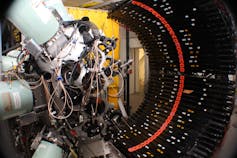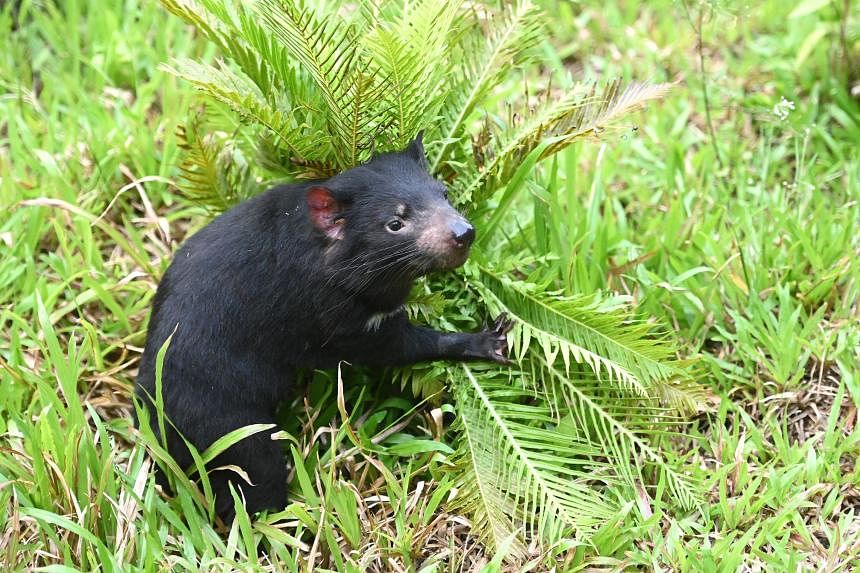By DEE-ANN DURBIN

1 of 12
People chant and hold signs in front of a Starbucks in New York, Thursday, Nov. 17, 2022. Starbucks workers at more than 100 U.S. stores say they're going on strike Thursday in what would be the largest labor action since a campaign to unionize the company's stores began late last year. (AP Photo/Seth Wenig)
Starbucks workers at more than 100 U.S. stores are on strike Thursday in their largest labor action since a campaign to unionize the company’s stores began late last year.
The walkouts coincide with Starbucks’ annual Red Cup Day, when the company gives free reusable cups to customers who order a holiday drink. Workers say it’s often one of the busiest days of the year. Starbucks declined to say how many red cups it plans to distribute.
Workers say they’re seeking better pay, more consistent schedules and higher staffing levels in busy stores. Stores in 25 states planned to take part in the labor action, according to Starbucks Workers United, the group organizing the effort. Strikers are handing out their own red cups with union logos.
Starbucks, which opposes the unionization effort, said it is aware of the walkouts and respects its employees’ right to lawfully protest. The Seattle company noted that the protests are happening at a small number of its 9,000 company-run U.S. locations.
“We remain committed to all partners and will continue to work together, side-by-side, to make Starbucks a company that works for everyone,” the company said Thursday in a statement.
Some workers planned to picket all day while others will do shorter walkouts. The union said the goal is to shut stores down during the strikes, and noted that the company usually has difficulty staffing during Red Cup Day because it’s so busy.
Willow Montana, a shift manager at a Starbucks store in Brighton, Massachusetts, planned to strike because Starbucks hasn’t begun bargaining with the store despite a successful union vote in April.
Starbucks workers at more than 100 U.S. stores are on strike Thursday in their largest labor action since a campaign to unionize the company’s stores began late last year.
The walkouts coincide with Starbucks’ annual Red Cup Day, when the company gives free reusable cups to customers who order a holiday drink. Workers say it’s often one of the busiest days of the year. Starbucks declined to say how many red cups it plans to distribute.
Workers say they’re seeking better pay, more consistent schedules and higher staffing levels in busy stores. Stores in 25 states planned to take part in the labor action, according to Starbucks Workers United, the group organizing the effort. Strikers are handing out their own red cups with union logos.
Starbucks, which opposes the unionization effort, said it is aware of the walkouts and respects its employees’ right to lawfully protest. The Seattle company noted that the protests are happening at a small number of its 9,000 company-run U.S. locations.
“We remain committed to all partners and will continue to work together, side-by-side, to make Starbucks a company that works for everyone,” the company said Thursday in a statement.
Some workers planned to picket all day while others will do shorter walkouts. The union said the goal is to shut stores down during the strikes, and noted that the company usually has difficulty staffing during Red Cup Day because it’s so busy.
Willow Montana, a shift manager at a Starbucks store in Brighton, Massachusetts, planned to strike because Starbucks hasn’t begun bargaining with the store despite a successful union vote in April.
“If the company won’t bargain in good faith, why should we come to work where we are understaffed, underpaid and overworked?” Montana said.
Others, including Michelle Eisen, a union organizer at one of the first stores to organize in Buffalo, New York, said workers are angry that Starbucks promised higher pay and benefits to non-union stores. Starbucks says it is following the law and can’t give union stores pay hikes without bargaining.
At least 257 Starbucks stores have voted to unionize since late last year, according to the National Labor Relations Board. Fifty-seven stores have held votes where workers opted not to unionize.
Starbucks and the union have begun contract talks at 53 stores, with 13 additional sessions scheduled, Starbucks Workers United said. No agreements have been reached so far.
.jpeg)
The process has been contentious. Earlier this week, a regional director with the NLRB filed a request for an injunction against Starbucks in federal court, saying the company violated labor law when it fired a union organizer in Ann Arbor, Michigan. The regional director asked the court to direct Starbucks to reinstate the employee and stop interfering in the unionization campaign nationwide.
It was the fourth time the NLRB has asked a federal court to intervene. In August, a federal judge ruled that Starbucks had to reinstate seven union organizers who were fired in Memphis, Tennessee. A similar case in Buffalo has yet to be decided, while a federal judge ruled against the NLRB in a case in Phoenix.
Meanwhile, Starbucks has asked the NLRB to temporarily suspend all union elections at its U.S. stores, citing allegations from a board employee that regional officials improperly coordinated with union organizers. A decision in that case is pending
.jpeg)
.jpeg)















